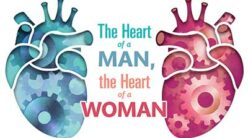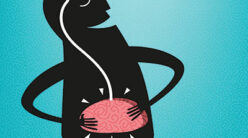 Even when the cardiologist gave Lynne Stewart her lab results, this 54-year-old teacher was convinced that she hadn’t had a heart attack. “A heart attack? That’s a `man’s disease.’
Even when the cardiologist gave Lynne Stewart her lab results, this 54-year-old teacher was convinced that she hadn’t had a heart attack. “A heart attack? That’s a `man’s disease.’
I had a backache, not chest pains. How could that be a heart attack?”
Carmen, 49, reacted the same way when she awoke only to find herself in the coronary care unit (CCU) of the local hospital. “How could I have had a heart attack? I’m a middle-aged woman, not an older man. I had no signs or symptoms.”
Would you know the warning signs of a heart attack in women? If you think chest pain is one of them, you may be wrong. Until recently most people–even doctors–thought the typical sign of a heart attack was pain in the middle of the chest or shortness of breath. Researchers now confirm that while this may be true for men, it is not always the case for women. In fact, sometimes women have no symptoms at all with a heart attack.
The statistics on heart disease in women are surprising. Did you know that:
- A woman’s chance of dying from heart disease is 1 in 2?
- This year more than 240,000 women will die of heart attacks–six times the number of women who will die of breast cancer?
- Among White women under age 45, coronary heart disease is second only to cancer as a cause of death; among African-American women between 30 and 39, it is the leading cause of mortality?
- More women will die from heart disease than from the next 10 leading causes of death combined?
- Since 1984 more women than men have died from heart disease every year?
Confusion Leads to Panic
Most people are not aware of these statistics. Even though heart disease is the leading cause of death in women, so much confusion surrounds women and heart disease that most patients are shocked when they are given this diagnosis. They want to know exactly why their bodies–and lifestyles–failed them. Many women are surprised to find out that this disease did not happen overnight but usually took many years to develop–years in which they had no outward symptoms.
To protect yourself or a loved one from having a heart attack, you need to reduce your risk factors and know a woman’s atypical signs. In that regard, this article may save your life or the life of a loved one as Dr. Nieca Goldberg, associate chief of cardiac prevention and rehabilitation and head of the Women’s Heart Program at Lenox Hill Hospital in New York City, gives heart-saving advice for all women. (Dr. Goldberg’s new book on women and heart disease, entitled Women Are Not Small Men, will be released fall 2001 by Ballantine Books, New York)
Q. How serious is heart disease for women today?
Dr. Goldberg: Heart disease is a major health issue for women. The problem is that most women (and their loved ones) do not perceive that they are at risk for heart disease. Each year nearly a quarter million women die of heart attack, compared to 43,000 women who die of breast cancer. Heart disease has always been a health problem for women, even though it was not recognized as such by the medical community or by women themselves.
Q. Are there certain risk factors that increase your chances?
Dr. Goldberg: The risk for heart attack is a combination of factors that you acquire and inherit. Some risk factors cannot be changed, such as family history, age, or race. Yet there are risk factors you can change, including lack of physical activity, smoking, elevated cholesterol, diabetes, and elevated blood pressure.
Q. What role does family history play in women and heart disease?
Dr. Goldberg: Your family history of heart disease can raise your risk by 25 percent. If a woman has a father younger than 50 and a mother younger than 60 who had problems with heart disease, that makes your chance 25 percent higher for heart disease. Although we can’t modify our family history, what we can do is modify some of those lifestyle habits that can contribute to our risks.
Q. How important is blood pressure in a woman’s risk for heart attack?
Dr. Goldberg: Your blood pressure is a vital risk factor, and it’s important to check it periodically. The top number is the systolic pressure, or the pressure when your heart is pumping the blood; that should be 130. The bottom number is when your heart is relaxed, which should be around 85. Interestingly enough, a good diet and regular exercise program can help keep your blood pressure down.
Q. What about cholesterol and women?
Dr. Goldberg: With cholesterol, it’s important to know all of your numbers. It’s not just the total cholesterol, but the balance of LDL (“bad”) cholesterol and HDL (“good”) cholesterol–along with the level of triglycerides (another type of fat). Women tend to have higher HDLs throughout life, and so their desired level of HDL is different. If a woman’s protective HDL is less than 45 to 50 milligrams per deciliter, that is a risk factor. The cutoff is lower for men; levels less than 35 mg./dl. in men are a significant risk. In fact, having low HDL (“good”) cholesterol is probably a better predictor of a woman having a heart attack than her LDL (“bad”) cholesterol. Also, elevated triglycerides in women are a risk factor for heart disease. That’s been found in men, too, but in women it’s particularly relevant.
Q. Does a woman’s body type affect her risk of heart disease?
Dr. Goldberg: Where we carry our weight seems to be a more important predictor of heart disease in later life. The reason is that women who carry their weight in the middle–apple- as opposed to pear-shaped–have a profile that’s associated with having low levels of HDL, the “good” or protective cholesterol; higher blood pressure; and higher levels of triglycerides. Apple-shaped women are more likely to be glucose-intolerant with a higher risk for diabetes, another important risk factor for heart disease.
Q. Which do you consider to be the most important risk factor for women?
Dr. Goldberg: The most important risk factor for women is not knowing that they are at risk. If you don’t think you are at risk, you will not make any important lifestyle changes to reduce the risk of heart attack. That’s why it’s important to learn about heart disease–know the facts, know your risk factors, and make lifestyle changes to control those you can.
Q. What are the symptoms women should be aware of for heart attack?
Dr. Goldberg: The most common image of a heart attack is a man clutching his chest. Although some women may experience the traditional warning signs of a heart attack, such as chest pressure radiating to the neck, arm, or shoulder; shortness of breath; or sweating, this is not always the case. A woman’s symptoms may be more likely to be one or more of the following:
Pressure in the lower part of the chest, where it may be more likely to be mistaken as a stomach ailment.
Shortness of breath in the absence of chest discomfort.
Fatigue on minimal levels of exertion.
Back discomfort.
Q. Are there good treatments for heart attack in women today?
Dr. Goldberg: There are good treatments for heart attack in women, but they need to get to the hospital quickly. Many women try to make sure the symptoms are serious and hesitate to go to the emergency room, much less alert their doctor of atypical symptoms. Some women drive themselves to the hospital, wasting precious time that could save their lives. If you are having unusual symptoms, call 911. Getting immediate medical treatment is crucial for survival. Within six hours of the symptoms doctors can open up blocked arteries with balloons or clot-busting medication. In addition, after you’ve had the first heart attack it is important to reduce your risk of a second heart attack and increase survival with proven treatments, such as aspirin, beta blockers, statins, and ACE inhibitors. In addition, cardiac rehabilitation, an organized lifestyle program of diet, exercise, and stress management, has been proven to improve the quality of life of women with heart disease.
Q. What are some key steps women should take to prevent heart disease?
Dr. Goldberg: There are many proactive steps you can take. For instance, get your blood pressure and cholesterol checked regularly. If these numbers are too high, work with your doctor on reducing them with medications and lifestyle changes. Physical activity is the core of a heart disease prevention program for women and men, so increase your level of physical activity. In study after study, researchers reveal that regular, moderate physical activity is associated with lower levels of LDL (“bad”) cholesterol, higher levels of HDL (“good”) cholesterol, and lower blood pressure. Exercise strengthens your heart and helps reduce blood pressure and stabilize weight. If you’re just starting an aerobic exercise program, begin slowly and work up to your regular daily total of at least 30 minutes each day of aerobic activity. Perhaps most important, if you smoke–stop! Smoking triples a woman’s risk of having a heart attack.
Q. What about menopause? Does that increase the woman’s chance of heart disease?
Dr. Goldberg: While heart disease used to be considered a man’s problem, scientists now know that women are just as susceptible, though it usually strikes women about 10 years later in life than it strikes men. The time gap seems to be related to estrogen levels. It appears that estrogen may give women some premenopausal advantages from heart attack, keeping blood vessels healthy and cholesterol in normal ranges. However, we are now realizing that heart attack risk extends beyond hormones. Coronary heart disease is a complex process, and estrogen alone may not be the sole explanation of a woman’s heart attack risk after menopause. No matter what your age, a healthy lifestyle is vital to protect your heart.
Q. If you could speak to every women about heart disease, what would your advice be?
Dr. Goldberg: My advice is very simple:
Know the warning signs and symptoms of a heart attack.
Know your risk factors for heart disease.
Take action to change the risk factors you can control.






